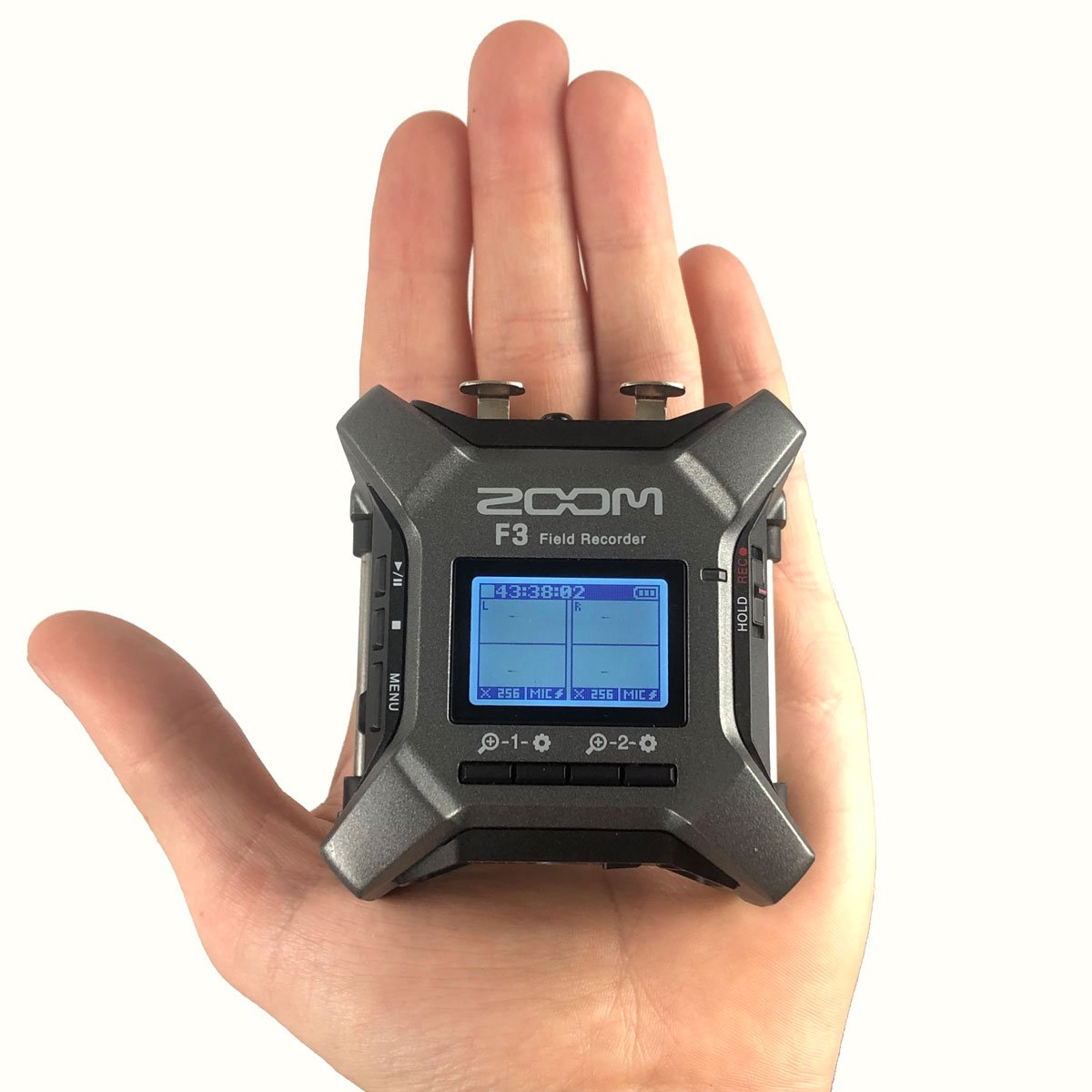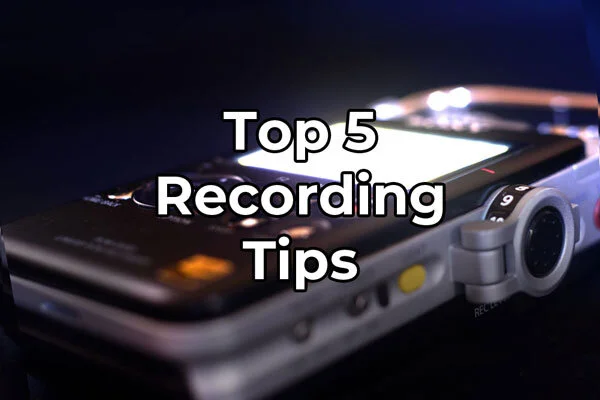Zoom F3 In-Depth Review: Best New Field Recorder
Learn what makes the Zoom F3 one of the best field recorders on the market today.
I have owned the Zoom F3 since its release in March, 2022. I’ve used it on 6 field recording expeditions, in 4 different states, and have recorded over 300 hours of audio with it in the field.
This in-depth review of the Zoom F3 will share my thoughts and experiences with the field recorder throughout the last 4 months. I will update this blog post as necessary if my opinions change as I continue to use this new device.
I purchased a Zoom F3 with my own money and the thoughts in this review are my own, honest opinions based on my experience with the device.
Table of Contents:
Summary
The Zoom F3 is an awesome new field recorder. For the price, there is no better option available for a 2 channel field recorder.
Its self noise rivals much more expensive Sound Devices models and its much smaller than even most handheld field recorders.
The aluminum body adds great durability and the built-in USB-C port allows for easy powering via an external power bank for extremely long run times on a single charge.
Additionally, 32-bit float means you’ll never experience clipping again, and you don’t have to fuss with setting gain levels.
Unfortunately, the F3 only supports XLR microphones. It lacks support for popular plug-in-powered microphones like the Primo EM272 capsules.
Also, because timecode requires additional accessories and has limited camera compatibility, the F3 is not a great choice if timecode is an essential part of your work flow.
Pro:
32-bit float
super quiet preamps
affordable
small
aluminum body
easy to use
built-in USB-C port for external power
Con:
no plug-in-power for 3.5 mm microphones
AA battery life is poor
limited timecode camera support
Size
The form factor of the Zoom F3 was one of the main reasons I decided to purchase one.
Measuring only 3 x 2 x 3”, the F3 is exceedingly small, making it a great option for field recordists who travel frequently or want a more compact sound kit.
As a nature field recordist, I fall under both categories.
To capture my sounds, I must hike several miles and carry camping equipment and food along with my sound gear so size and weight are both premiums for me.
By leaving my Sound Devices 702T at home, the Zoom F3 has saved me a lot of weight and space in my pack, allowing me to travel further and enjoy my time spent in the field even more.
Build Quality
Overall, the Zoom F3 is built very well.
The gray material is aluminum and the black parts are made of plastic.
The aluminum casing is intelligently designed; its “x-shaped” pattern prevents the plastic parts from being damaged if the recorder is ever dropped.
Although the battery door and tabs are made of plastic, they feel solid and durable. However, since AA battery life with the Zoom F3 is relatively low, most users won’t use the battery door and will instead power the device with an external power supply.
The metal side bars are convenient for clipping the Zoom F3 into a sound bag, as is standard for most dedicated field recorders.
On the back of the device is a 1/4”-20 tripod socket for mounting the F3 on a tripod or camera hot shoe accessory.
Menu System
The Zoom F3 menu system is very simple and intuitive to use.
I’m really glad that it uses a button interface instead of a touch screen. Not only does this make the F3 accessible to more users, it also allows it to be operated in the dark, or buried in a sound bag, and will never require recalibrating.
In the main menu, you’ll find settings for:
sample rate
file format (mono or stereo)
pre recording (3 seconds)
LCD (contrast and on/off toggle)
date/time
Bluetooth function (F3 Control or Timecode)
language
By pressing the gear button, you’ll open up the input settings, which can be controlled independently:
phantom voltage (+24V or +48V)
high pass filter (10hZ steps from 0-240hZ)
invert phase
delay (0.1ms steps from 0.0-30.0ms)
Recording Controls
Starting a recording session on the Zoom F3 is super easy. Simply push the recording switch up. The switch is spring-loaded and will return to the starting position.
A red LED light will turn on to indicate a recording is taking place and a beep will be played through monitoring headphones. Note, this beep is just to alert you that recording has started, the tone is not actually recorded to the audio file.
To turn on “hold” so the F3 will ignore any accidental button presses while recording, push the recording switch down and it will click and lock into the “hold” position.
Now, because the Zoom F3 only records in 32-bit float, there is no gain setting since clipping is not possible due to the incredible dynamic range 32-bit float is capable of capturing. However, you can control signal amplification by clicking the magnifying glass button for either input.
Note: changing the amplification level while recording will not change the recording volume of the final audio file. Be sure to set the amplification level to your desired setting before starting the recording to have these levels reflected in the final recording.
Located to the right of the headphone input jack are buttons for increasing or decreasing headphone volume.
Does The Zoom F3 Have Timecode?
Yes, the Zoom F3 offers support for timecode, however it requires additional accessories.
To use timecode with the Zoom F3, you’ll need UltraSync Blue and the Zoom BTA-1 Bluetooth adapter.
This is pretty limiting if timecode is essential for your workflow because the UltraSync Blue timecode system does not have great camera compatibility. However, it is compatible with the Atmos Ninja V with Atmox sync module.
Self Noise
The Zoom F3 is advertised as being capable of recording “the quietest rain drops” with no self noise.
Its specifications back this claim with a self noise measurement of -127dBu, only 2 dB louder than the acclaimed Sound Devices line of recorders.
As a nature field recordist, I put the Zoom F3 to the test recording some of the quietest sounds on our planet and it did not disappoint.
Below are some sound samples ranging from a delicate dawn chorus to buzzing beetles in the night.
Battery Life
Zoom F3 powered by external power bank.
Using a pair of 2000mAh AA batteries to power two +48v condenser mics, I was able to record for 156 minutes at 96kHz. This figure is pretty underwhelming and makes AA batteries a poor power choice for the Zoom F3.
To get around this limitation, I use an Anker 26800mAh external power bank (Amazon affiliate link) for powering the F3.
By connecting the power bank to the F3 via its built-in USB-C port, I’m able to record for over 48 hours with the same microphones.
Final Thoughts
In my opinion, the Zoom F3 is the best field recorder available right now if you only require 2 XLR inputs.
With 32-bit float capability, an extremely small form factor, and super quiet preamps, the Zoom F3 is an industry leader at an affordable price.
Support Acoustic Nature
If you enjoyed this post and would like to help support Acoustic Nature, please consider "buying me a coffee" or becoming a Patreon with the buttons below.
As a thank you for your support, Patreon supporters receive a copy of Field Recording For Beginners, exclusive access to the full Behind The Sounds video series, nature sound library downloads, and more.
If you are unable to support the site financially, please share this post with others, or leave a comment below letting me know you enjoyed this post! Both are free and help the website grow. Thank you ♫
Thanks for reading,
-Jared





















